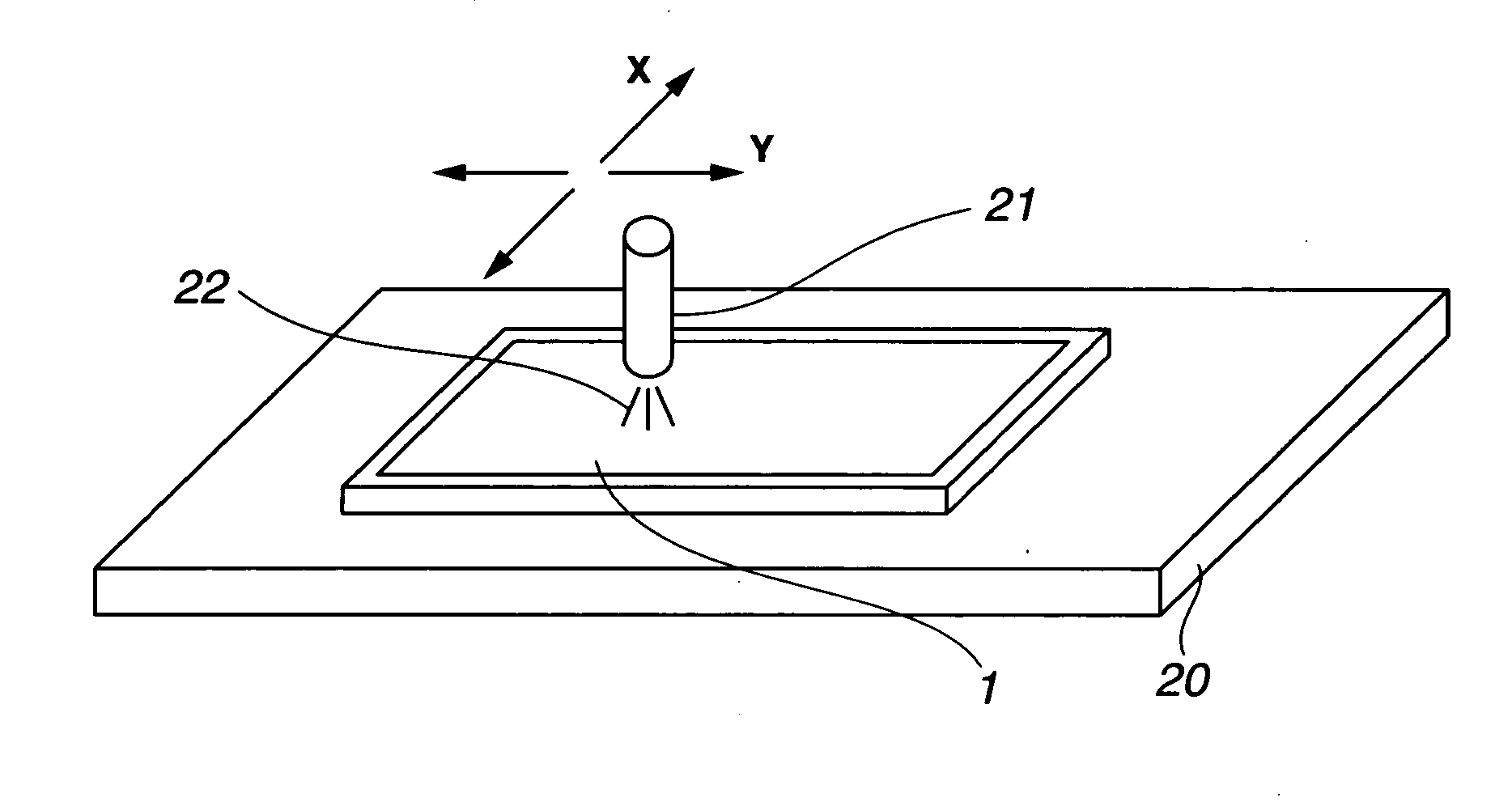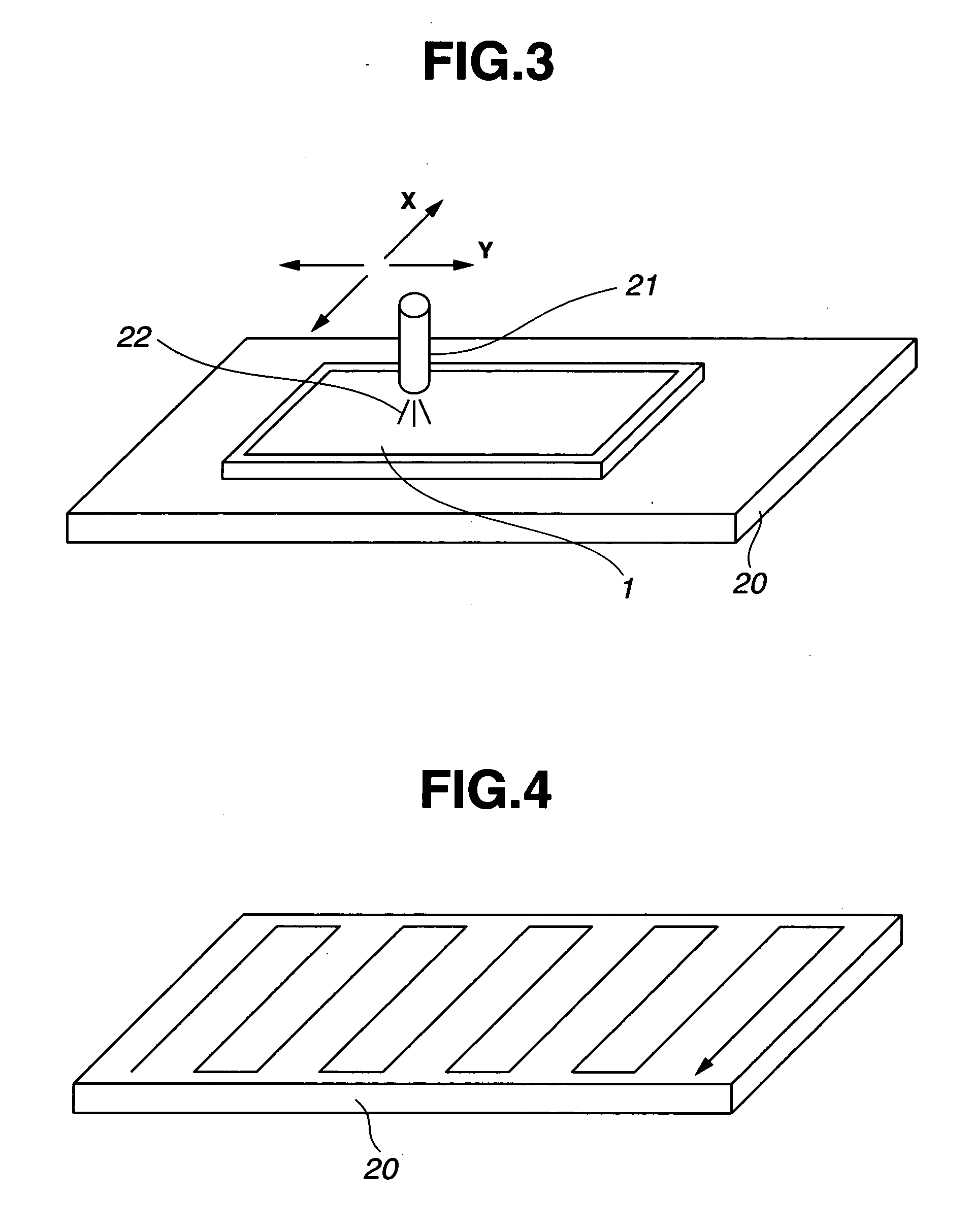Recycling of large-size photomask substrate
a photomask and substrate technology, applied in the field of large-scale photomask substrate recycling, to achieve the effects of improving the production yield of panels, reducing the burden of exposure correction, and improving the accuracy of exposure correction
- Summary
- Abstract
- Description
- Claims
- Application Information
AI Technical Summary
Benefits of technology
Problems solved by technology
Method used
Image
Examples
example 1
[0095]A used large-size photomask substrate with a chromium light-shielding film had a size of 330 mm×450 mm (diagonal length approx. 558 mm) and a thickness of 5.0 mm. It was immersed in a remover solution of 13.7 wt % of ammonium cerium(IV) nitrate (Ce(NO3)4.2NH4NO3) and 3.3 wt % of perchloric acid in water. The chromium light-shielding film was thus removed, yielding a glass substrate stock.
[0096]The substrate stock was measured for accuracy in the vertical attitude, finding a front surface flatness of 8 μm (surface flatness / diagonal length=1.43×10−5), a back surface flatness of 8 μm, and a parallelism of 8 μm. It was of a shape having a raised center portion relative to the least square plane.
[0097]Then, a deflection of the substrate stock by its own weight when held horizontally was calculated using material strength and the support position of a substrate when held horizontally. A substrate deformation and platen accuracy distortion were previously inspected from a quantity of...
example 2
[0106]The procedure of Example 1 was repeated except that the used large-size photomask substrate had a size of 520 mm×800 mm (diagonal length approx. 954 mm) and a thickness of 10.0 mm.
[0107]The proximity gap was measured over substantially the entire region using a laser displacement meter. The measurements of proximity gap included a maximum value of 58 μm and a minimum value of 47 μm, over the entire region excluding the peripheral regions extending 4 cm from the sides, with a gap error of 11 μm.
example 3
[0108]The procedure of Example 1 was repeated except that the used large-size photomask substrate had a size of 850 mm×1,200 mm (diagonal length approx. 1,471 mm) and a thickness of 10.0 mm.
[0109]The proximity gap was measured over substantially the entire region using a laser displacement meter. The measurements of proximity gap included a maximum value of 59 μm and a minimum value of 47 μm, over the entire region excluding the peripheral regions extending 4 cm from the sides, with a gap error of 12 μm.
PUM
| Property | Measurement | Unit |
|---|---|---|
| thickness | aaaaa | aaaaa |
| thickness | aaaaa | aaaaa |
| size | aaaaa | aaaaa |
Abstract
Description
Claims
Application Information
 Login to View More
Login to View More - R&D
- Intellectual Property
- Life Sciences
- Materials
- Tech Scout
- Unparalleled Data Quality
- Higher Quality Content
- 60% Fewer Hallucinations
Browse by: Latest US Patents, China's latest patents, Technical Efficacy Thesaurus, Application Domain, Technology Topic, Popular Technical Reports.
© 2025 PatSnap. All rights reserved.Legal|Privacy policy|Modern Slavery Act Transparency Statement|Sitemap|About US| Contact US: help@patsnap.com



